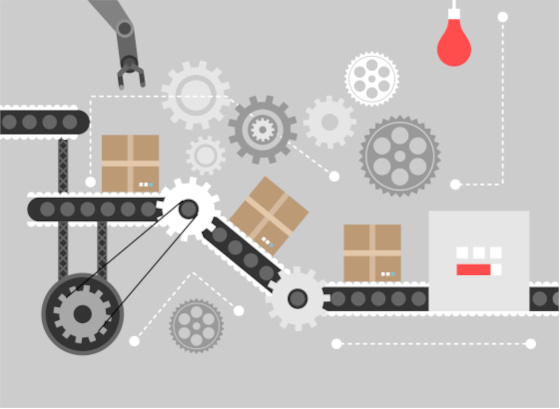What is the NPI process?
The New Product Introduction (NPI) is a process of turning an idea into a launched product. The NPI process varies from organization to organization but certain stages are universal. Each company develops its best practices while creating and launching new products. However, it’s useful to understand a general structure to start with.
NPI partly overlaps with the new product development process but it’s focused on organizing the work of operational teams and supply chain partners around the final release of a product. NPI includes planning, producing, and scaling to volume production.
1. Concept
The market needs and pains are defined. The sources of inspiration may include industry trends, customers’ requests, analysis of competitors’ products. Employees of a company can also contribute a great deal at this stage, from the top management to the salespeople and engineers.
A team brainstorms for ideas of possible new products to develop. The ideas are then discussed, analyzed and compared to select the best one for development.
2. Feasibility study
Two main aspects defined at this stage are economic feasibility and technical feasibility. The technical feasibility of the product is defined. Without building the system, it’s evaluated whether an idea can be realized within available resources.
In an economic sense, it’s investigated whether product development is profitable and viable for a company. In other words, whether the concept would be worth making investments. The total investments needed for your project are assessed, including the labor, construction or cash requirements, the cost of raw materials, etc. Also, the potential consumer base and stakeholder interests are analyzed.
This stage also includes risk assessment, project timeline definition, and creation of a detailed business plan.
3. Design and Development
The technical specifications are created (based on the business requirements) and the prototype is developed. Then, it’s tested, and the design is revised according to the results. This is repeated until a viable design is determined. Both usability and styling of a product are determined.
During the design stage, the future manufacturing specifics are also considered. Otherwise, a prototype may prove not suitable for mass production.
The basic processes required for production are outlined and the preliminary Bill of Material (BOM) is created.
4. Pre-production
The partners are selected. The team chooses suppliers and manufacturers to cooperate and conducts onboarding.
Dimensional variations, methods of measurement, necessary equipment, control methods are defined. During the pilot builds and capability studies, the manufacturing processes are refined and validated. The team develops process documentation (instructions, standards, packaging evaluations) and quality controls.
After all the preparations are completed, the project is reviewed with the owner and stakeholders.
At the same time, marketing materials and product information are prepared.
5. Launch/Manufacturing

The product launch should be carefully planned.
The sales and customer service teams are trained to present the product and handle inquiries.
It’s important to monitor the attitude and collect feedback about the product. In case any critical issues are detected at this stage, they can be still fixed before mass production.
Product information is published on all available channels. The marketing campaign is launched, advertisement starts. The response to the campaign is measured to adjust the communications.
Many companies choose to launch the product on a small scale in one region before a full launch.
6. Mass Production
The setup time, product handling, material flow are further optimized to ensure mass production in a timely manner and maintaining high quality.
At this stage, some companies have to find new suppliers and manufacturers. It happens in case the demand grows faster than it was planned or the quality of production begins to deteriorate.
7. Evaluation
At this stage, the success is measured. The team reviews process performance.
Taking a look at the project and documenting errors and lessons learned is important for an organization to improve the development and introduction of other products. New technologies and effective processes to improve the current production may be found.
Establishing a progressive new product introduction process allows a company to develop new products faster and more cost-efficiently. It starts with brainstorming and selecting the best idea of a new product, and ends after the manufacturing is set up, with the evaluation of the resources spent in the process and results obtained. In general, there are seven stages of this process: Concept, Feasibility Study, Design and Development, Pre-production, Launch/Manufacture, Mass Production Evaluation..



